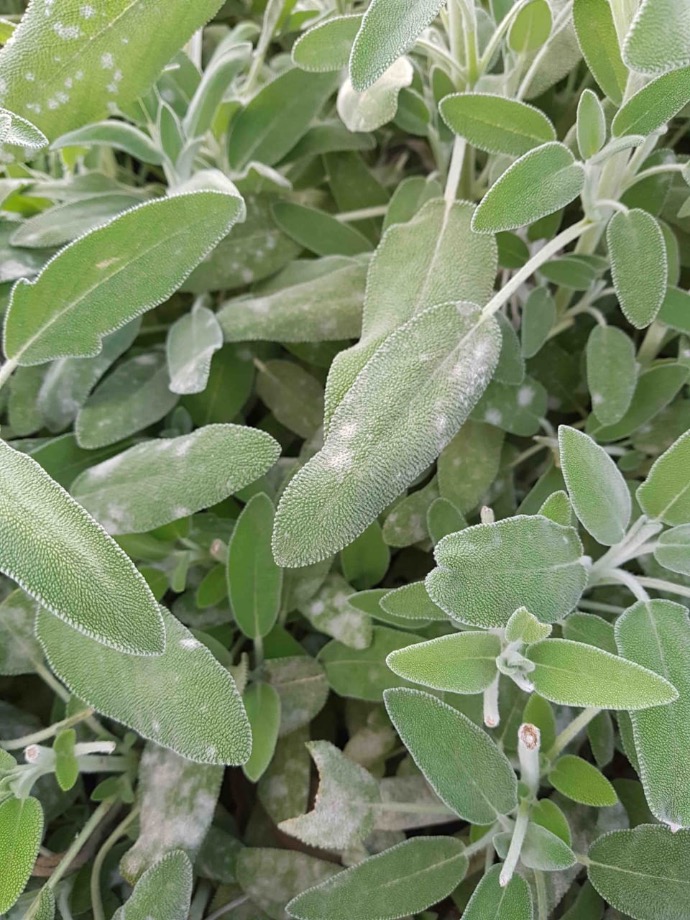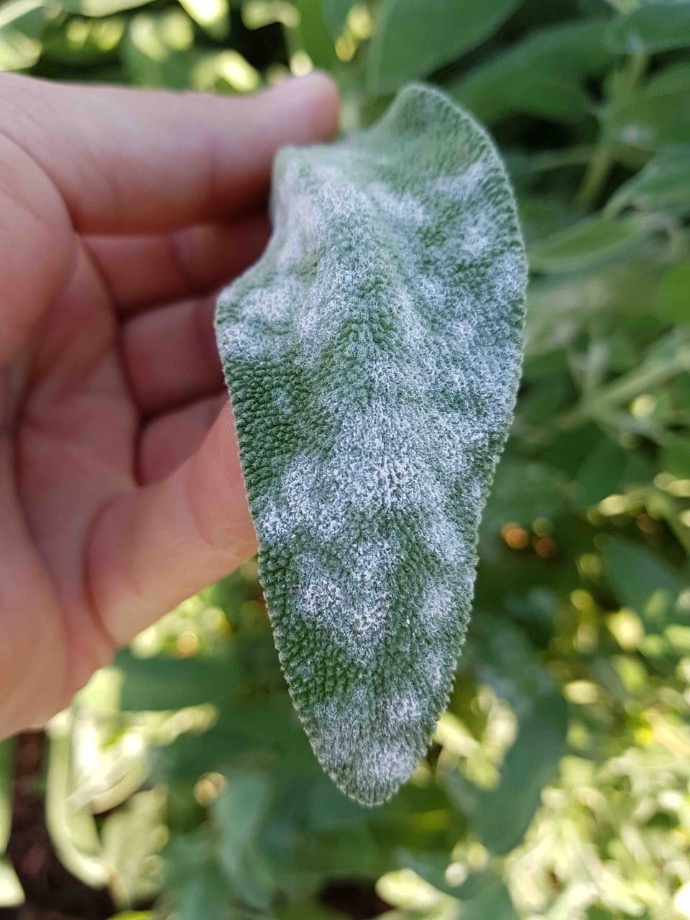Sage
Sage is a perennial, 12-24 inches tall, and frost-tolerant. It prefers well-drained, sandy-loam soil in full sun. Keep the soil moist. Sage is both edible and has medicinal properties.
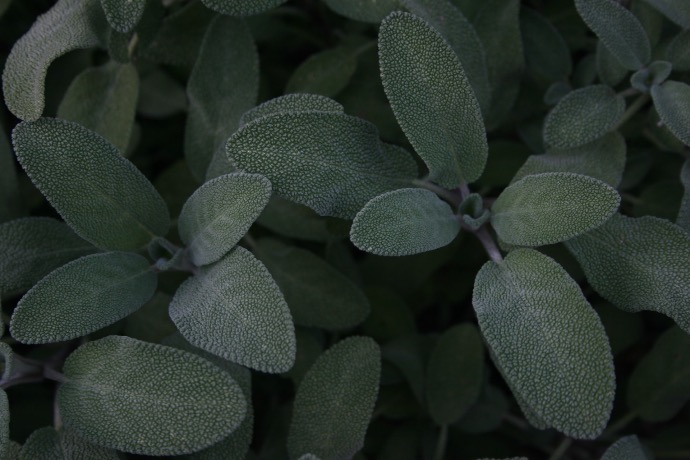
Habit
Perennial
Height
30-60 cm
Growth
slow
Soil
well-drained, sandy loam
Shade
Full Sun
Moisture
moist
Edible
Yes
Medicinal
Yes
Origin
Mediterranean
Climatic Condition
Temperate, Dry Climate
Temperature (°)
10-25°C
Humidity (%)
40-60%
Potting media
Peat, compost
Fertilizers
Organic, compost
Watering
Moderate
Plant Weight
50-200 g
Flowering Time
Spring to Summer
Soil Ph level
6.0 - 7.5
Water Ph level
6.0 - 7.5
Soil EC
1-2 dS/m
Yield Per Plant
500-800 g/plant
NPK ratio
05:10:10
life Span
Perennial
Health Benefits
Anti-inflammatory, digestion aid
Suggested Grow Media or Potting Mix ?
50% loam, 25% compost, 25% sand
Suggested Fertigation/Fertilizers
Fertilize every 6 weeks with a balanced fertilizer.
Common Diseases and Remedies
powdery mildew
whitish powdery spots on the basal portion of foliage
neem oil
HEALTH BENEFITS
1. Rich in antioxidants.
2. Supports brain function.
3. Lowers cholesterol, and aids in digestion.
4. Also used for sore throats and oral health.
What Is An Sage plant ?
Salvia officinalis, sage or sage, is a perennial herb with woody stems, gray leaves, and blue to red flowers. It is a member of the mint family Lamiaceae and is native to the Mediterranean region but has naturalized in many parts of the world.

What Are The Different Types Of Sage Plants?
1. Garden sage (Salvia Officinalis)
Garden sage, commonly known as sage, is the sage most commonly used in cooking.
2. Common Sage
Sage, Salvia officinalis, is a small evergreen shrub with woody stems, gray leaves, and blue to purple flowers.
3. Golden Sage
Solid sage is not bad, but variegated wood is beautiful.
4. Pineapple sage (Salvia elegans)
This variety is also known as sweet sage because it emits the sweet scent of pineapple when it blooms.
5. Blackcurrant Sage:
Blackcurrant sage has luscious green leaves and small tubular red flowers with a taste of black currant.
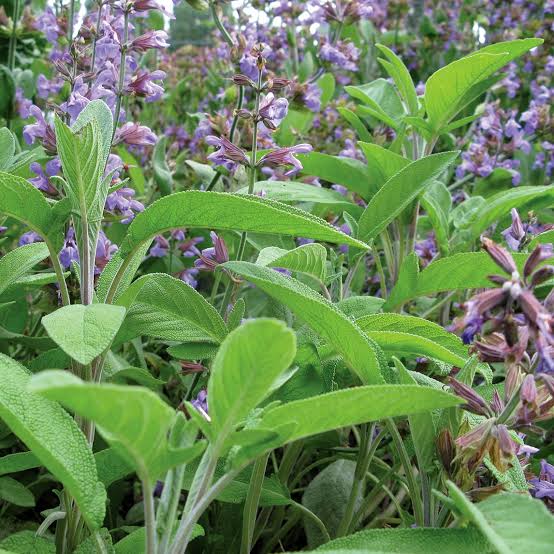
1. Location
Plants are found in the Mediterranean. They like sunny, well-drained soils in bushes or grasslands found on coasts, hillsides and mountains near the Mediterranean. Sage has been used in cooking and medicine for centuries in Europe.
2. Sunlight
Bathing in the sun: The sunlight that saints need is Full sun, i.e. at least 6 hours of direct sunlight, is ideal for vigorous plants. It is important to place your white sage where it can receive daily sunlight to support healthy photosynthesis and growth.
3. Soil
Sage requires sandy, loamy and well-drained soil. For good growth the pH needs to be between 6.0 and 7.0. If you are growing it for culinary purposes, do not over-fertilize; When you grow fast, you can lose intensity of flavor.
4. Hydration
How can you water sage daily? Sage requires 0.8 cups of water every 9 days when kept out of direct sunlight and placed in a 5.0-inch.
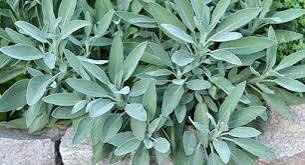
5. Nourishment
Like most plants, sage plants need a variety of essential nutrients to grow well. The essential nutrients that sage plants need are:6. Issues
Sage causes very few pests when grown in well-drained soil. Good weather will reduce problems with leaf diseases. Some of the problems include slugs, spider mites, cockroaches, root rot and blight.
7. What are the benefits of Sage plant ?
8 Health Benefits and Usage Areas of Sage
It is high in many nutrients.
is rich in antioxidants.
May improve oral health.
may reduce menopause symptoms.
May lower blood sugar.
It can improve memory and brain health.
May lower "bad" LDL cholesterol.
may prevent some types of cancer
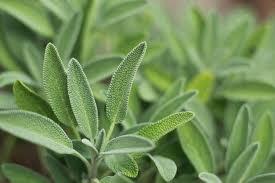
FAQs About Growing Sage Plant
1. What does sage help with?
Salvia miltiorrhiza (Salvia miltiorrhiza) has long been used in traditional medicine to reduce inflammation and protect the body from oxidative stress, free radical damage, angiogenesis, inflammation, diseases and infections.
2. How long does sage take to Grow?
Growing sage as a small amendment rather than from seed. Growing sage from seed is a difficult task: Seeds store poorly, germination rates are negligible, and it takes about two years to grow a mature plant from germinated seeds.
3. Is sage a healing plant?
Sage has a long history of spice and health. It was used as a medicinal herb in ancient Greece and Rome, as well as in Native American and Chinese medicine. Today, sage is promoted as a treatment for mouth or throat problems, memory loss, diabetes, high cholesterol and other conditions.
4. Why is sage called sage?
The name sage comes from the Latin salvo (to save or heal), which commemorates the journey of Christianity and the Holy Family to Egypt, where they were saved from King Herod's soldiers by hiding in the bushes. Sage has been used for centuries to enhance the beauty of elegant women.
5. Is it safe to eat sage?
Sage is considered safe with no side effects (46). But some people are concerned about thujone, a compound found in sage. Animal studies show high doses of thujone may cause brain damage Section. However, there is insufficient evidence that thujone is toxic to humans.
